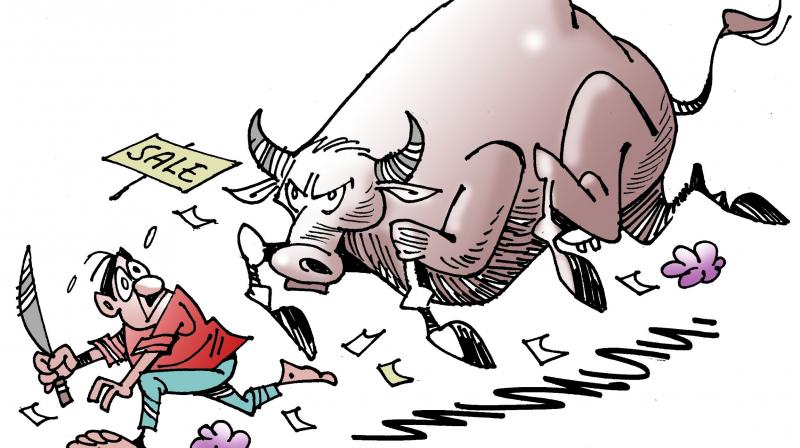Centre's moo shakes up cattle markets

Hyderabad: The gazette notification issued last week by the Ministry of Environment for the Prevention of Cruelty to Animals (Regulation of Livestock Markets) Rules - 2017 has had an impact on the cattle markets. While the rules say the aim is to ‘protect the animals from cruelty’ and not to ‘regulate the existing trade in cattle for slaughter houses’, the effect, of course, is just the opposite.
The Kondamadugu cattle market, one of the biggest weekly cattle-fairs on the outskirts of the city, had sales of at least 500 cattle per week during the off season. But following the gazette notification, and news reports in the media, sales on Tuesday fell to 300.
Samala Laxma Reddy, an associate of the market contractor S. Ganesh Reddy, said that 50 per cent of cattle sold at the market were meant for slaughter and the other 50 per cent were used for agricultural purposes.
“The weekly cattle market has existed for decades. It used to observe sales of at least 1,500 cattle per week during the season and 1,000 during off season. Now, the sales have come down to 500 during off season and 750 during the season, which is from July to December,” he said.
Mr Reddy said that on Tuesday, slaughterers did not visit the market due to the recent gazette notification by the central government which stipulates pristine conditions for the welfare of cattle. “They made calls to us and enquired about the sales. When we asked the veterinary officials, they informed us that implementation of the new rules may take three months. That will be peak time for sales and we shall lose our business. This time the value of the tender was '52 lakh and we may lose it if the new rules come into existence,” he said.
Farmers from surrounding villages and mandals such as Mylaram, Bommala Ramaram, Chikati Mamidi, Gattugudem, Malyala, Modempally, Medipally, and Fakkirguda etc bring their cattle to Kondamadugu market.
Farmers from various parts of Nalgonda, Yadadri, Suryapet, Mahbubnagar, Gadwal and Rangareddy purchase the cattle. Buyers from the twin cities also buy cattle from this market.
Nakkirthi Hari Babu, a farmer from Janapally village, said that oxen, bulls and buffaloes were sold for between Rs 5,000 and Rs 20,000 per animal based on the weight of the animal. “The price of milk giving cattle is between Rs 50,000 and Rs 1.5 lakh each. Cows are rare in this market, Mr Reddy said.
Following the situation at the Kondamadugu market, farmers and organisers of other cattle markets like Rammannapet, Yadadri and Narsingi near Gandipet are expressing concern over the impact on their markets. Narsingi market is held every Friday. The Draft Prevention of Cruelty to Animals (Regulation of Livestock Markets) Rules, 2017 was notified on January 16, 2017 inviting objections and suggestions. The rules were finally notified on May 23, 2017.
As per the 2007 census done by the animal husbandry department of Andhra Pradesh, the cattle count in the Telugu states was:
1.12 crore Cattle (ox, cows, bulls)
1.32 crore Buffaloes
Rs 30,584 crore. Is the net worth of the cattle sector as per the estimates by the Telangana government in 2014-15
29 lakh Families in Telangana depend on cattle for their livelihood.
What the new rule says?
Shearing, painting of horns and cutting of ears of buffaloes prohibited.
Casting animals on hard ground without adequate bedding is prohibited.
Use of chemicals, colours on body parts of animals is restricted.
Putting of any ornaments or decorative materials on animals is also not allowed.
Sealing of udders to prevent the calf from suckling has also been restricted.
Animal markets should have proper shed, feeding troughs, water facility with multiple taps and buckets, lighting system, ramps at appropriate heights of vehicle, separate enclosure for sick and old animals, separate enclosures for young and pregnant animals, veterinary facility, feed storage area etc. No person is allowed to bring a calf for sale to the market.
Owners who bring animals to the market need to furnish a written declaration stating that the cattle have not been brought to the market to be sold for slaughter and photo identification proof needs to be provided.

